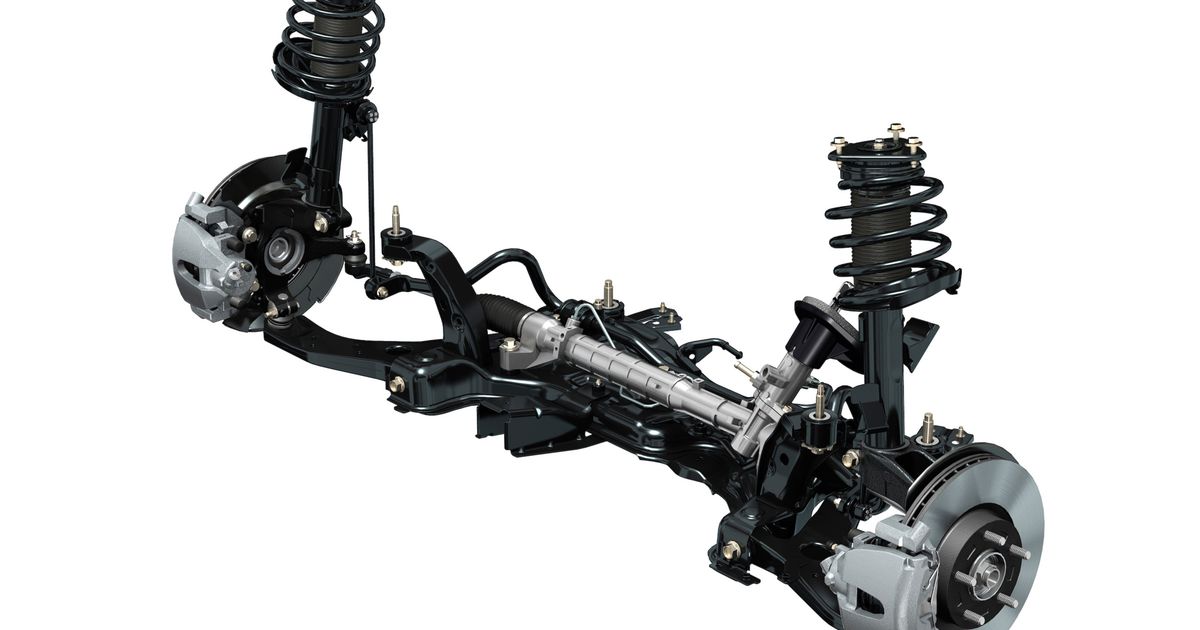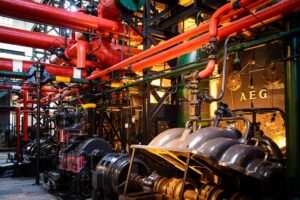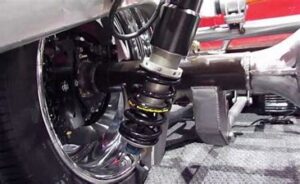The first things which come to our mind when we think about an automobile’s performance are horsepower, torque, etc. but we never ever think that all these things make no sense if the control of the vehicle is not completely in a driver’s hands.
The main aim of a car’s suspension system is to increase the amount of friction between the tyres and the surface of the road to the maximum and to ensure that the passengers are comfortable. A car’s suspension system would not be necessary if the roads are smooth and flat without any irregularities but this is simply not possible. Even the best highways have some irregularities. These irregularities in the road apply some kind of force to the wheels of the vehicles.
We know that force is a vector or in other words, the force has both magnitude and direction. An imperfection in the road makes the vehicle to move up and down normal to the road surface. The magnitude of the force depends on the size of the irregularity and it causes some acceleration in vertical direction every time no matter whether the irregularity is small or large. Without anything helping here, the energy will make the car to move in the same direction (vertical).
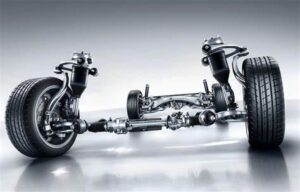
Even the gravitational force of earth will make the tyre and hence the vehicle to slam into the road surface. So, something is needed which will absorb all of this energy and help the vehicle to have a smooth journey even in the situation of irregularities and imperfections on the road.
Table of Contents
Working Of The Suspension System Of A Car
The wheels of a car can be attached in a number of ways in order to help them move upward and downwards on their springs and dampers. The tyres are free so that they can rotate freely with the drive shafts.
There are two main types of suspension systems:
1. Dependent Suspension System:
A rear-wheel-drive car consists of a live axle which is simply a tube having both the drive shafts which are half shafts and the differential gears. A rigid axle has springs and links which prevents sideways movement.
2. Independent Suspension System:
Every single wheel of a car having independent suspension system is attached to the body of the car or some subframe separately. A number of different spring systems may be used to do this.
The differential is fixed to the frame of the car in case the driven wheels are suspended independently and here, the differential drives the wheels by joined drive shafts. Five different kinds of suspension systems are used in vehicles these days.
Double wishbones are used most commonly at the front side. Basically, two wishbones are there which are located like one on the top of the other one. These help to keep the wheel upright in the circumstances when it moves upward and downward.
The MacPherson-strut suspension is used often at both front and rear sides. The hub of the wheel is tightly fixed to a structure which is shaped like a telescope and is upright as well as tubular. This is a strut (a component of the suspension system which consists of s shock damper and coil spring, mostly used as an alternative for the shock absorber, front upper control arm and even some rear axle control arms ) which has its top-end attached to the frame or to a reinforced wing.
The whole strut allow steering on the front vehicles of the car. Pivoted arms extend inward and forward to the frame to keep the wheel straight in position and resist the accelerating as well as the braking forces.
A trailing arm is fixed to the hub of the wheel at one end and is extended forward towards a pivot on the frame. In some cases, the arm is even expanded to convert it into V shape having two pivots, either placed side by side or with the inner pivot slightly behind the front one which makes a semi-trailing arm. In most of the cases, the trailing arms are found just on the rear side.
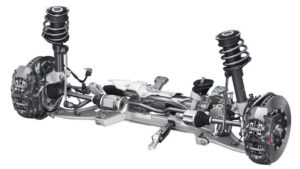
A leading arm is used only at the front and is the opposite of a trailing arm as it consists of the wheel in front of the pivot. Swing axles might be present at the front side or rear side.
The system is similar to a beam axle which is cut in half and anchored to pivots on the frame. Most often, the half-axle is widened to make into a V with front and rear pivots to prevent it from twisting.
Frequently Asked Questions-
So, here some of the frequently asked questions about different types of Suspension parts of car, working –
How Does My Car’s Suspension System Work?
Your car’s suspension system also likely has an anti-sway bar. The anti-sway bar can help to shift the movement of your wheels relative to your steering wheel. It effectively stabilizes your car’s direction as it moves along the road. Your car likely has a suspension system for both its front wheels and its back wheels.
What Are The Different Types Of Suspension Parts For Cars?
Aluminum suspension parts have been used in production cars, and carbon fiber suspension parts are common in racing cars. Designs differ as to how much space they take up, and where it is located.
Where Is The Suspension Of A Car Located?
The suspension of a car is actually part of the chassis, which comprises all of the important systems located beneath the car’s body
What Is A MacPherson Strut?
The MacPherson strut is a type of automotive suspension system that uses the top of a telescopic damper as the upper steering pivot. It is widely used in the front suspension of modern vehicles, and is named for American automotive engineer Earle S. MacPherson, who invented and developed the design.
What Are The Disadvantages Of MacPherson Strut Suspension?
The drawback of a MacPherson Strut Suspension is that front wheel cars tend to understeer under hard cornering by nature and the suspension setup tends to lean the body of the car under hard cornering which makes understeer worse.
Conclusion
To help the cars to stop rolling even in the worst conditions, or stop the leaning over on corners in cars, – an anti-roll bar is used, usually at the front side only but, sometimes even at the back and in some cases, at both front and back sides. An anti-roll bar is basically a torsion bar (a long rod or bar which is manufactured using the spring steel in such a way that one end of the bar is fixed while the other one is free so that it can twist ) which crosses the car through two pivots placed on opposite sides of the frame.
On the outer side of the pivots, the bar bends back and one of the ends is fixed to each wheel, often through one or two rubber bushes which are completely flexible. When one of the wheels moves in the upward direction, it pulls up one end of the bar and at the same time, the second end pulls up the other wheel simply maintaining the car level.
On the surface level, it appears that the suspension of a car has a pretty straightforward job but reading this article helps to realise that in reality, the suspension system has a massive job to perform and the components have to withstand an enormous amount of stress compared to other major systems in a car.
I hope we covered the working of car suspension system in detail. Let us know in the comments below if you have any questions.
Cheers!
